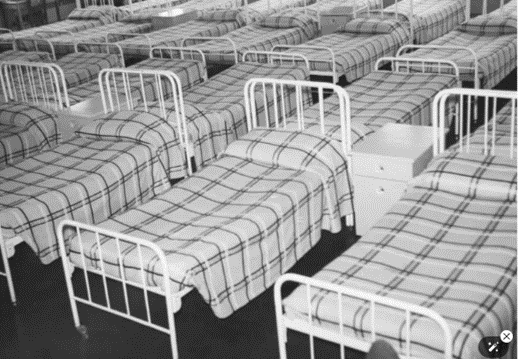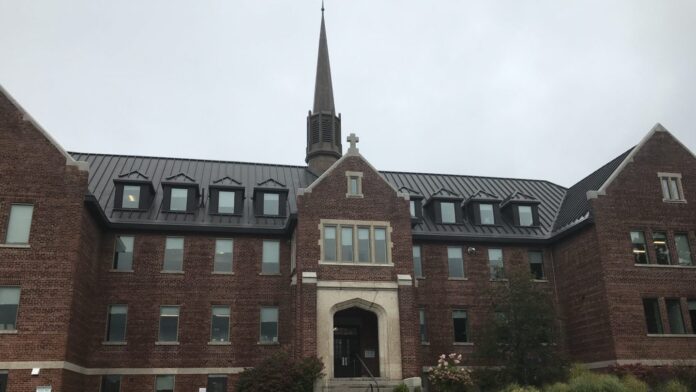Many decades ago when I first graduated from the University of Toronto with a bachelor’s degree in Medieval History and Islamic Studies, I hoped to become a high school history teacher. The year I graduated there was a surplus of teachers looking for work and the teacher training colleges closed their doors to new entrants. I couldn’t become certified to teach so went looking for work elsewhere. I ended up finding a job in educational publishing.
I sold post-secondary textbooks to schools, liaising with university professors and community college instructors. My territory took me as far away from Toronto to Sault Ste. Marie, the place where three of the Great Lakes meet. The Sault had two post-secondary institutions, Sault College and Algoma University. I would spend two days on each visit talking to instructors, the bookstore staff, and administrators.
Yesterday, Canada observed its National Day for Truth and Reconciliation, an annual event to remember the victimization of Indigenous people by Canada’s many governments. As I read the September 30th edition of The Globe and Mail, an article described how Canada set up residential schools for Indigenous children. One of those was on the site of Algoma University. It is called Shingwauk Hall. During my visits to the university, I had heard about a historical connection between the school and local First Nation peoples but I didn’t know the history. The Globe and subsequent research enlightened me.
Algoma University’s main campus building sits on the site of what was once a residential school that was established in the latter half of the 19th century to turn First Nations’ children from Indian to White. The goal was to “take the Indian out of the Indian,” to make them forget their culture, languages and traditions. It didn’t create equality for these children who continued to face discrimination in mainstream Canadian society.
Canada’s Residential Schools
The Canada-wide 19th-century residential school program enforced cultural assimilation without equality. Schools separated children from families making them live in crowded residences like the one depicted below. Christian religious organizations largely ran the schools.

Shingwauk Hall, the main building of Algoma University, was built in the 1930s to replace the original Shingwauk Residential School erected on the traditional lands of the Anishinaabe First Nation and Métis. The Métis were descendants of intermarriage between French voyageurs and Native North Americans, a common occurrence in the fur trade.
The Shingwauk name is associated with Shingwaukonse, an Anishinaabe Chief who believed that a residential school would give his tribe European-based knowledge and skills to enable them to thrive in the new Canadian nation. The school was run by the Anglican Church, the second-largest administrator of residential schools in the country. The vast majority of residential schools were run by the Catholic Church.
I first called on Shingwauk Hall in 1973. Other than the name there was no trace of its residential school past or acknowledgement that the prior purpose of the place was to “take the Indian out of the Indian.” Today, however, Shingwauk Hall although still a working university, is making an effort to acknowledge its residential school past.
America’s Indian Boarding Schools
The United States has had its version of residential schools. It parallels that which Canada imposed on its natives in their dispossession of North America. Canada acquired its western lands through the purchase of the Hudson Bay Company’s Rupert’s Land, a British Crown monopoly that stretched from the U.S. border to the Rocky Mountains, Hudson’s Bay and the Arctic Ocean. No Indigenous people were consulted during this massive acquisition. Where treaties existed between the British Crown and native tribes, most were soon disregarded.
The U.S. acquired its western territories through the Louisiana Purchase from France, a war with Mexico and later a land purchase, through an agreement to divide the Pacific Northwest with the British, and by purchasing Alaska from Russia two years after the end of the Civil War.
In both countries, reservations confined Indigenous people to marginal lands, ejecting them from their traditional territories. The assimilation experiment followed.
The original Thirteen Colonies involved conversion to Christianity with Christian church organizations administering assimilation experiments that began in the 17th century. The reality, however, produced abusive conditions that inflicted all kinds of indignities on native residents including kidnapping children from homes, corporal punishment, malnutrition and disease.
When unmarked graves were found at a residential school in Kamloops, British Columbia, it lit a fire that led to the beginning of Canada’s national reconciliation effort with a growing acknowledgement of the injustices committed to Indigenous peoples. The Kamloops discovery resonated in the United States with both federal and state governments beginning to reflect on their treatment of Native North Americans. Thousands died in Canada’s residential schools with the last one closing in 1996.
In the United States, however, as of 2023, based on Department of the Interior records, 523 Indian boarding schools have been identified. Some are closed but many remain. In Oklahoma alone, 80 of these schools were established.
The nature of these American schools has changed recently since the passing of the Indian Self-Determination and Education Assistance Act of 1975. Assimilation is no longer their purpose.
Shingwauk Hall, Reconciliation and the Future
Shingwauk Hall in the Sault is no longer a residential school. Today Algoma University features the Shingwauk Kinoomaage Gamig, an accredited Anishinaabe post-secondary institution that since 2008 has been offering programs geared specifically to Indigenous students reconnecting them with their language, traditions and native skills. It is one of nine Indigenous institutes of higher learning that have opened in Ontario.
The main hall at Shingwauk includes an exhibit highlighting the history of the residential school program. Institutions like this and others remembering the European incursion into the Americas are similar to Yad Vashem and other Holocaust memorials and museums that today can be found around the globe. The Nazis and collaborators murdered almost 50% of the world’s Jews from 1937 to 1945.
The European arrival in the Americas led to the death of almost 90% of the native population from communicable diseases in a half-century. For the Indigenous population of the Americas, memorials and museums are needed to remind all humanity of what happened, and of the subsequent subjugation of the survivors. It isn’t enough to celebrate a single day of remembrance without redressing the remaining institutional racism and the continuing underserved Indigenous communities in North America.
For Indigenous people living in Canada and the United States reservations still have to live with boil water advisories, substandard existing homes and a lack of new builds, few basic amenities and overcrowding. The Indigenous population still suffers from environmental exposure to asbestos, lead and mercury pollution. Diabetes runs 2.5 times higher than the average in Indigenous populations. Poverty rates are twice the national average in both countries. Teenagers continue to drop out of school at higher rates than the national average. Alcoholism and substance abuse are common substitutes for gainful employment.
Reconciliation in correcting the legacy of colonialism is just a first step for Canada and the United States. Self-determination for Indigenous communities with public and private capital investments in capacity building is needed. Infrastructure and service gaps have to be addressed. All of this has to happen with Indigenous groups in partnership with national, state, provincial, county and municipal governments.









